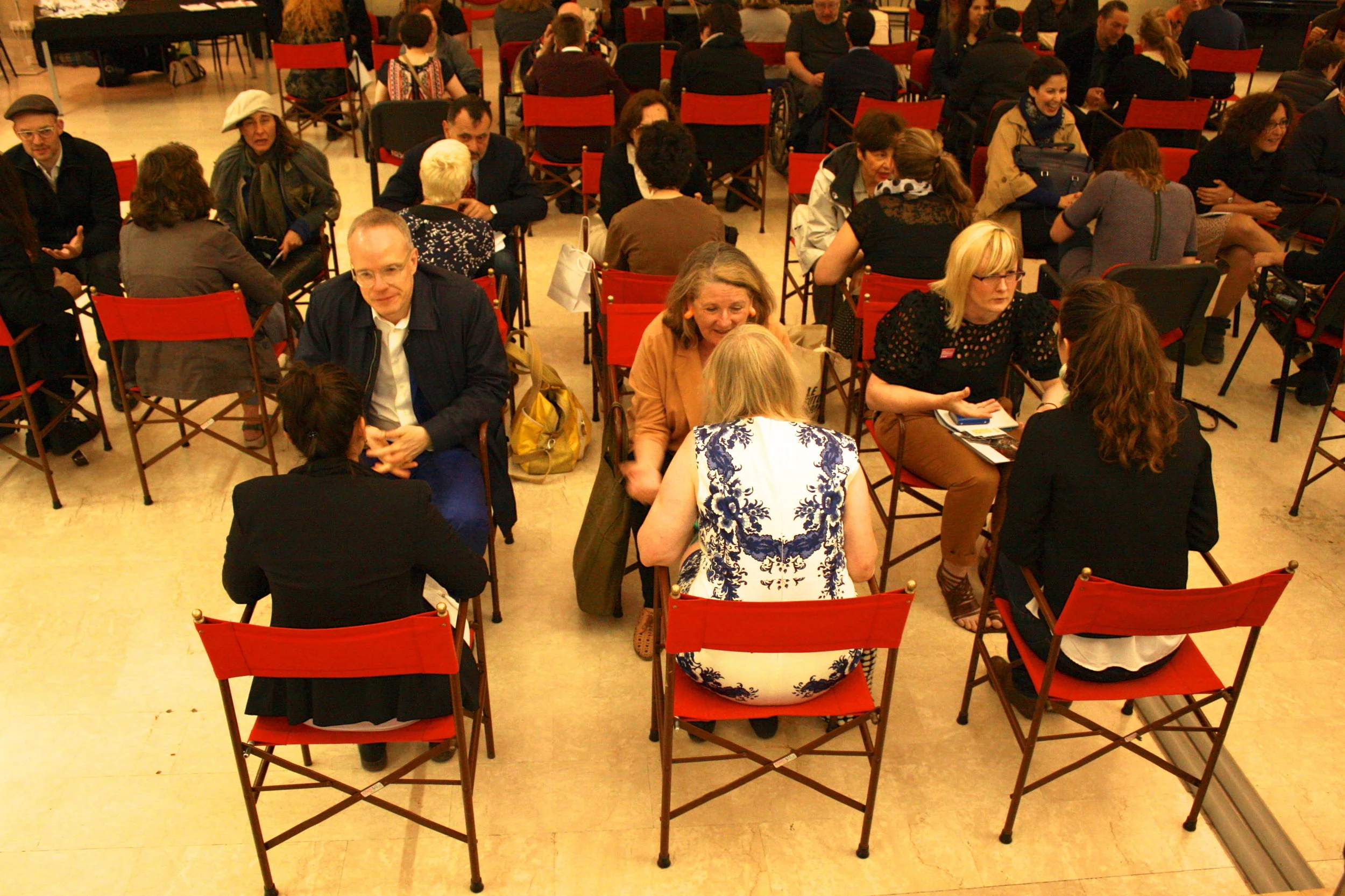VA13 Performances
As part of Venice Agendas workinprogress and Arts Pavilion Bournemouth have commissioned a series of performances respectively, to take place in different locations.
There are three strands to the performances. Jenni Cluskey will be making a three durational works throughout the morning events at CZ95, Aaron Williamson will be performing in different parts of Venice and The Girls, Marcia Farquhar and Tim Russell will be performing at Palazzo Zenobio.
workinprogress invited artists Jennifer Cluskey and Aaron Williamson to respond to Venice in relation to its site, context and identity. Cluskey’s new work explored the politicisation of culture through the action of ‘peaceful protest’ using the traditional art form origami. For Williamson the letters ‘J, K, W, X, Y’ which only appear in the Italian alphabet through imported words, form the basis of his performance in the streets of Venice.
Jenni Cluskey
Aaron Williamson: Venice Invasions
Venice Invasions is a new work by Aaron Williamson, where he explores the Biennale in relation to the cities own defenses against an international cultural invasion. The Biennale occupies Venice over a period of six months in order to promote a global culture of art led by national representatives. As the city that was built to withstand siege is taken over by more than 300,000 art-visitors into an area with under 50,000 residents, can this biennial event be considered an invasion of sorts?
Williamson proposes to explore this notion through a series of public performances. According to ‘Invasion Theory’ there are three stages for a successful invasion: infiltration, conflict and pacification. Williamson’s performances along the waterfront between the Venice Biennale at Giardini and the Columns at the Molo, will draw upon these three theoretical stages for material. Each stage will be presented separately over three consecutive days.
Wednesday 29th May, 2 – 4pm; along the waterfront between Giardini and the Molo
Stage 1: Infiltration – This can be achieved more effectively through stealth rather than sudden aggression
Thursday 30th May, 2 – 4pm; along the waterfront between Giardini and the Molo
Stage 2: Conflict – Conflict is often accompanied by the pitching of markers around the gained territory
Friday 31st May, 2 – 3pm; Various locations
Stage 3: Pacification – Having successfully taken over the territory the invaders’ chief aim is pacification of the local populace. The ideal is to reach a condition of stasis so that they may remain in the territory for as long as possible.
Jenni Cluskey’s work explores the politicisation of culture through the performative action of ‘peaceful protest’ using the traditional art form origami. Over a period of three mornings, Cluskey proposes a series of exchanges as durational live art works. Each event aims to open up a dialogue with the audience and invites them to take part or take away pieces of work made during the performance as tokens or an exchange.
Wednesday 29th May: at CZ95: Symbol Exchange focuses on the value and economical exchange of symbols. Starting with a paper gun Cluskey transforms this heavily imbued symbol into two peace cranes. The peace crane is handed out to guests – one peace crane to keep, the other to give away.
Thursday 30th May: at CZ95: Currency exchange sees Cluskey invite guests to exchange currency on a like for like value. Approaching the artist in pairs the audience is invited to exchange €2.50 each, which in turn is exchanged for a €5 note that the artist cuts in half and turns into a lotus origami piece.
Friday 31st May: at CZ95: Gifts is Cluskey’s final performance and will see the artist give away what she refers to as Gifts in handmade origami boxes. Each Gift is a box, which contains the lowest denomination of the euro currency, a 1cent coin; the gift is the coin, the box is just the packaging – the recipients can decide which is more valuable.









